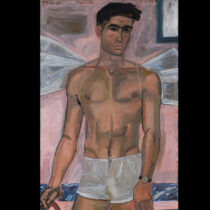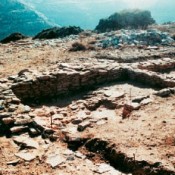In many regions of the Greek world dance events of peculiar character were held in the framework of worshiping certain deities. These dances were usually called “ecstatic” with the ancient meaning of the term “ek-sta-sis”, that is displacement, deviation from the usual rational behavior, sudden and intense change of psychological mood and mental state.
According to the ancient written sources the psychosomatic strain of the ecstatic dancers was making their heart beating faster and tears running from their eyes. Some of them fainted or fell in catalepsy, their general behavior corresponding to people who had lost their mind or who were drunk. It is obvious that the ecstatic dances stand on the boundary between a distinct human motion, called dance, and an unusual psychosomatic state, described as “mania”.
Both these elements are apparent in the iconography of the ecstatic dances, known mainly through their numerous representations on Attic vases from the Archaic and Classical period, depicting groups of ecstatic female dancers of Dionysiac rites. The study of these representations reveals that the vase-painters had introduced the so-called “pathos formulae” in the usual dance iconography, in order to stress the god-in-spired mania by which the represented dancers were obsessed.
The “pathos formulae” are specific and definite iconographic schemata that deeply impress their image on our visual memory. Such schemata are the raised hands, bent torches, up lifted hair, loosened dresses and the tossed-back heads that have been used in the iconography of the ecstatic dances already since the Archaic age. They also occur in other representations, illustrating events of high intensity or extreme emotion (rape, lament, etc.), since the “pathos formulae” record the pitch rather than the content of passion and occurrence.



